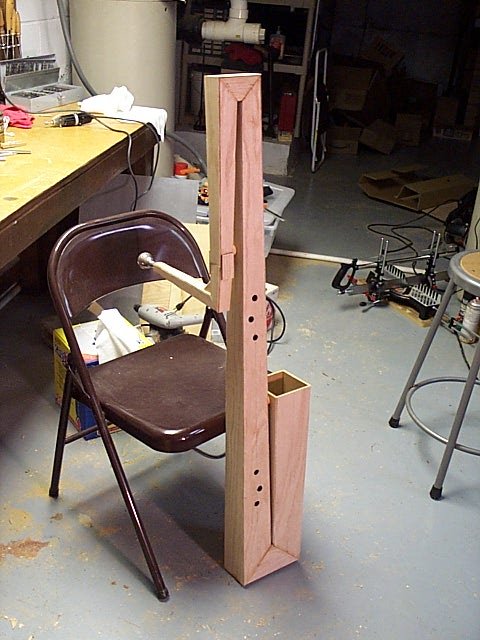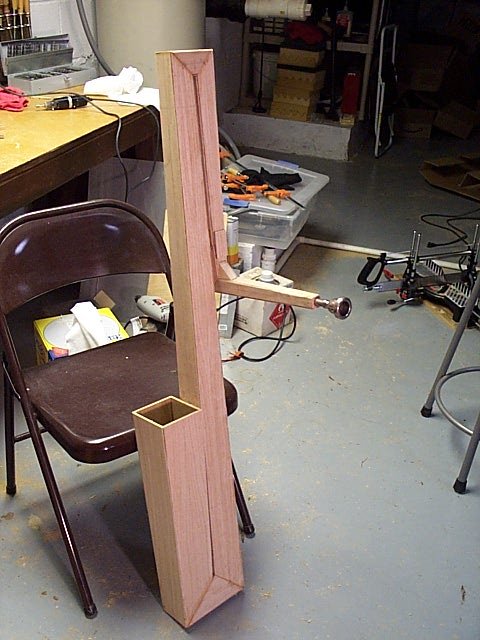With the finger holes drilled, give the entire instrument a
good sanding, trying to smooth the glued corners of the tube, remove excess
glue smears, and erasing pencil marks.
Shake the instrument and vacuum the openings to remove wood fragments
and sawdust. Wipe the outside of the instrument with a clean, lint-free
cloth. Apply a coating of polyurethane varnish to the entire outside surface.
Use cotton swabs to apply varnish to the inside edges of the finger holes,
and also varnish the undercut areas.
The prototype has a flaw near the bocal, and a cut was made to correct
it. This photo shows two hastily applied plywood patches that were added
to reinforce the repair glue joint.
The photo shows the Squarpent prior to final sanding, cleanup and varnishing.



